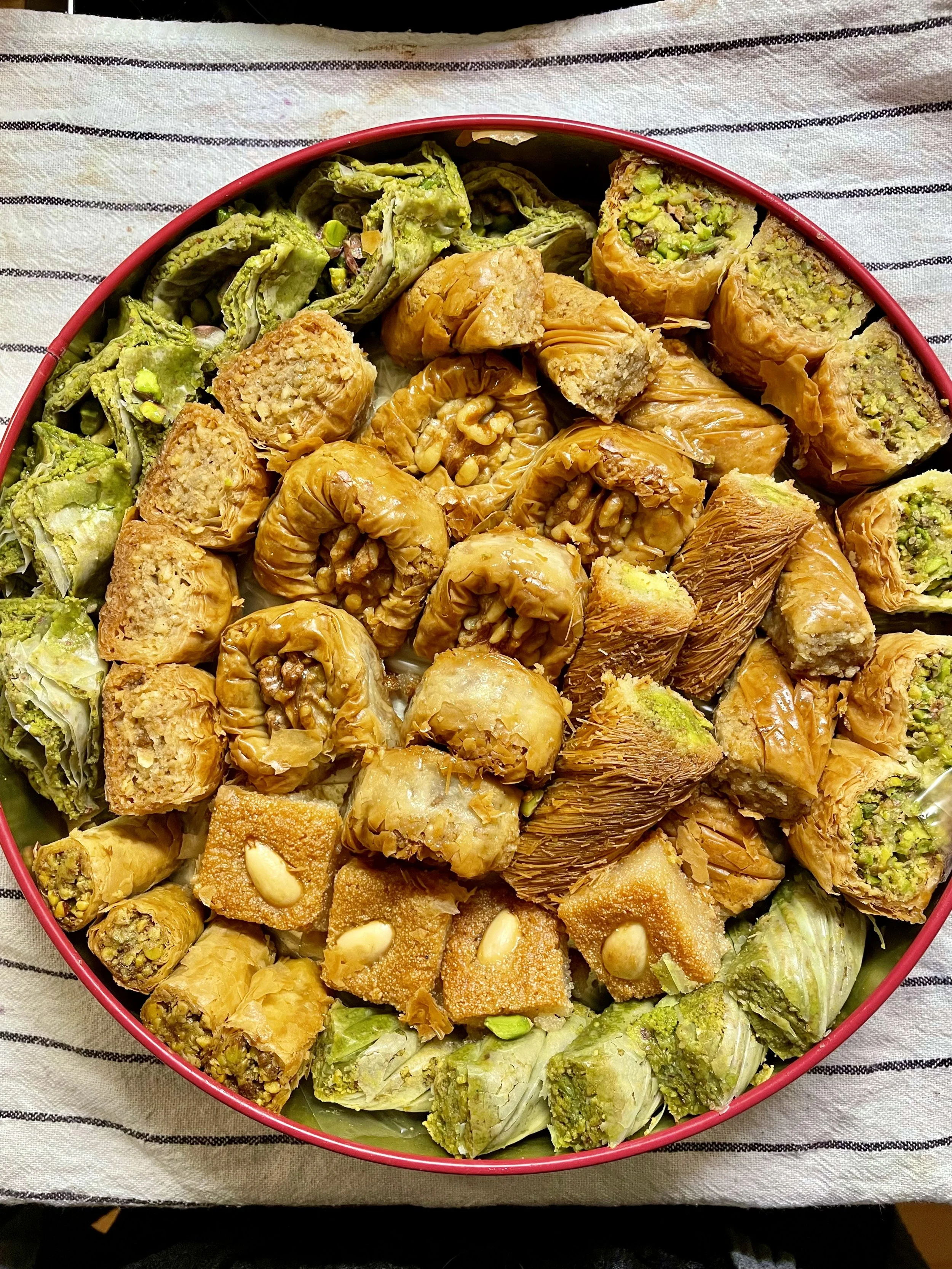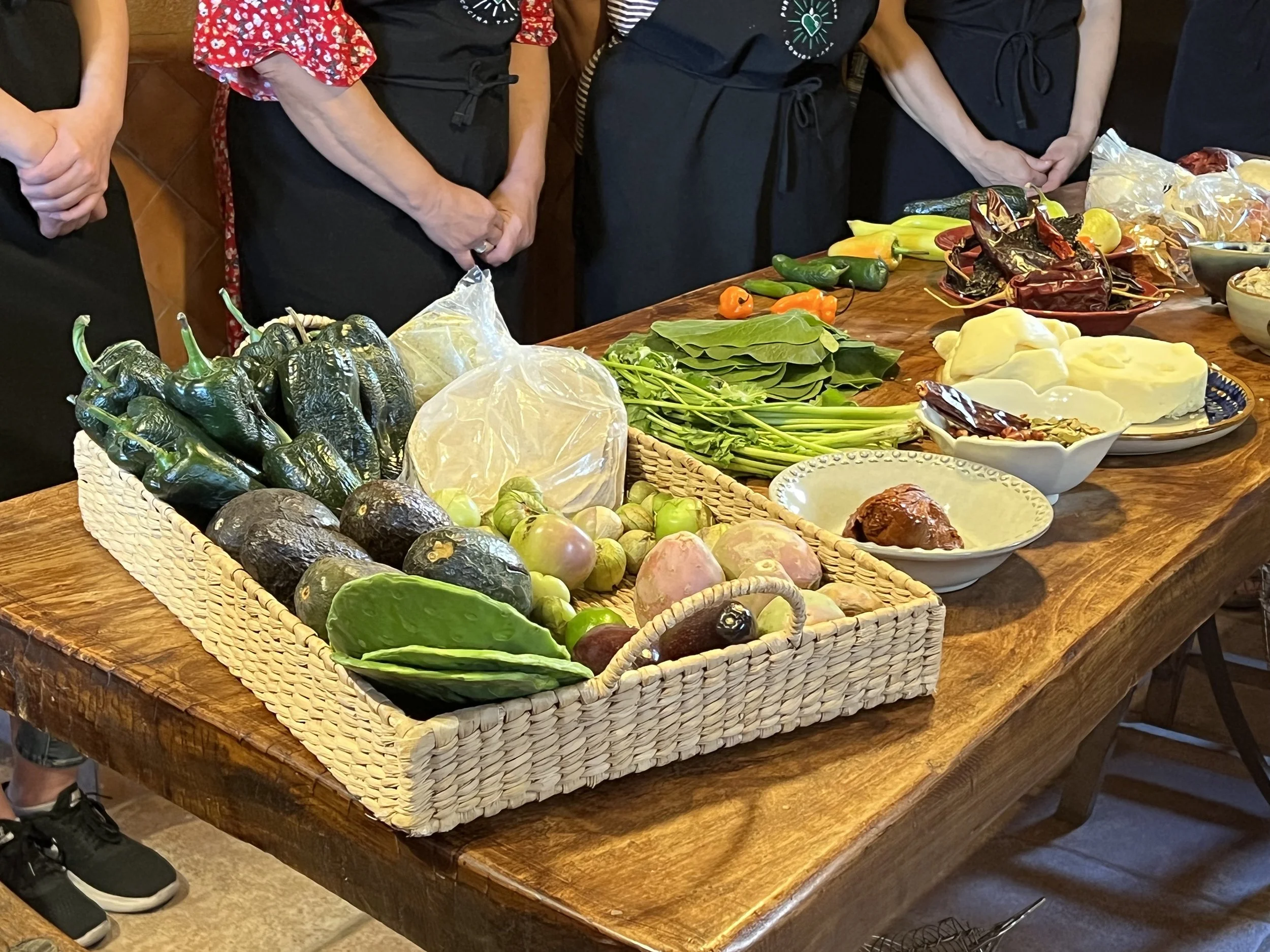It’s no secret that Jordanian food is an integral part of the hospitality in Jordan. Within the local culture, food is a way of sharing love and abundance with family, friends, and visitors. Infused with the spices of cardamom and saffron, the cuisine is influenced by Syrian, Persian, Palestinian, Turkish, and Bedouin cuisine. Jordanian foods can range from heavy dishes with meats and spices, to lighter dishes of vegetables and legumes.
The best way to explore Jordan is through the flavors that the cuisine has to offer. Here’s a food guide that will help you embrace the full culinary experience in Jordan:
Here is what to know about Jordanian food:
Traditional Jordanian Dishes
Mansaf by Ashley Blake
Mansaf
Initially eaten by the nomadic Bedouin tribes of Jordan, mansaf became the country’s national dish in the 20th century (after gaining independence from Britain). Served on a large tray and usually enjoyed by hand, it is a spiced rice dish layered with lamb or chicken, a salty dry yogurt called jameed, and fried almonds or pine nuts on top.
Mansaf can also be made vegetarian with seasonal vegetables like cauliflower or zucchini. Typically eaten every week in most Jordanian households, this delicious dish is also popular in neighboring countries with slightly different preparations and ingredients.
Mutabel
Nutritious and filling, mutabel is a roasted eggplant dip that is described as the perfect blend between hummus and Baba Ganoush (a roasted eggplant dip). This delicious and creamy dip can be found in different versions throughout the Middle East, and it is quite the staple in Jordan.
You can make mutabel by roasting your eggplants until they turn into a puree, and then mixing with tahini, yogurt, mashed garlic, lemon juice, and salt. Mutabel is often garnished with chopped tomatoes, parsley, onion, mint, extra virgin olive oil, and even pomegranate seeds, and enjoyed with freshly baked pita bread.
Maklouba by Ashley Blake
Maklouba
Translating to “upside down,” maklouba is another traditional one-pot dish that consists of layering rice, potato, eggplant, cauliflower and chicken. What makes it unique is that once it's cooked in the tray, it is then flipped and served upside down, beautifully displaying all its layers. It is usually enjoyed with yogurt and a fresh salad like fattoush, making it quite a healthy meal.
Fattoush
This popular salad in both Jordan and the Levant is made with lettuce, cucumber, tomato, and peppers. The key ingredient separating it from the common “Arabic salad” is the addition of fried pita chips. The salad is then dressed with lemon, mint, pomegranate molasses, and a generous amount of olive oil.
Fatoush by DJ Ramirez
Jordanian Breakfast
Hummus by Ashley Blake
Hummus
Although quite common in most Middle Eastern regions, this Jordanian staple is enjoyed all day long, for breakfast, lunch, and dinner. This big bowl of goodness is quite hearty, rich, and filling, and consists of blending chickpeas, tahini (sesame paste), lemon, and garlic. Although quite nutritious on its own, hummus is often topped with olive oil and dusted with sumac and chopped herbs, or can also be topped with cooked vegetables or meats.
The taste and consistency of Jordanian hummus are quite different than the “American version” because it is not enjoyed as “just a dip.” It is very creamy and with a side of pita can be enjoyed as a complete meal, not just an appetizer.
Halva
The Arabic word for this Jordanian treat is halawa which translates to sweet. Halva has its own versions around the Middle East and the world. This unique dessert was enjoyed back in the 12th century and consists of mixing together sesame paste and a variety of nuts and seeds into a thick base. Crumbly and fudgy versions can be found, depending on the ingredients, and halva is usually enjoyed in the morning with tea or coffee.
Labneh
Labneh is a dish native to the Middle East, but varieties exist in Cyprus, Greece, and Turkey. If you’ve ever tried thick Greek yogurt or Icelandic skyr you’ve been close to experiencing labneh! Lebneh is often included as a mezze (or dip) enjoyed with flatbread or pita, along with other small dishes, or as condiments to include in meat and vegetable dishes. It can come plain or garnished with a generous drizzle of extra virgin olive oil, chopped mint leaves, or parsley.
Street food in Jordan
Pita or Fltabread with Za'atar
Flatbreads by Ashley Blake
Known as Manaquish, this herbed flatbread is a staple in the street food in Jordan. What makes them so special is the blend of spices they are generously topped with before cooking. This spice blend is called Za’atar and it includes a mix of sumac, wild thyme also with the name za’atar, and sesame seeds.
Dates
Medjool dates, or nature’s candy, are a well-known fruit harvested on the western border of Jordan, where the Jordan River is found. This caramel-tasting fruit is packed with benefits such as antioxidants, and digestive properties, and even helps protect the heart, brain, and bone health.
Dates and fresh produce at the market in Amman. Photo: DJ Ramirez
Dates are the perfect replacement for artificial sweeteners. You can find myriad varieties in the markets in Jordan, and the trick is to try many different kinds to find your perfect blend of flavor and texture.
Fresh produce
Markets in Jordan, also known as souks, are street markets where you can find everything from spices and herbs to the freshest of produce. Jordan’s agricultural sector actually produces a lot of fresh produce such as tomatoes, peppers, cucumbers, bananas, olives, beans, and lettuce. eggplants Medjool dates and za’atar.
Dipping falafel in hummus Photo credit: Hiep Le
Falafel
Although Falafel is commonly found all over the streets and restaurant menus in the Middle East, Jordan is recognized for producing some of the best versions. For those who have not had the chance and pleasure to try one of these fried goodies, they consist of finely chopped parsley and garlic mixed with ground cumin and chickpeas. They resemble a veggie nugget and are delicious on their own, dipped in hummus, or stuffed in a pita.
Jordanian sweets
Baklava by Ashley Blake
Baklava
This delicious and rich treat is one of Jordan’s most beloved desserts. It can be found in pastry shops and bakeries all over the country. As it originated back in the Ottoman Empire, different versions of baklava can be found in other regions of the world. The desert consists of thin phyllo dough layers topped with a mixture of finely chopped pistachios and other nuts, along with honey syrup, lemon juice, and even rosewater.
Um Ali
This household staple bread and butter pudding from Jordan is commonly found in family meals. It wouldn't be a Jordanian pastry if the mixture didn't also include a combination of pistachios, raisins, and even coconut flakes. It is then baked until golden brown and finalized with cinnamon, making it the perfect way to conclude a fabulous dinner.
Enjoy the flavors of Jordan with us at Traverse Journeys
There is no doubt that you will get a taste of Jordan from all the spiced and unique savory and sweet treats. Join us on our Taste and Trails of Jordan to explore and discover a country with ancient history, vibrant culture, and some of the best food in the region!


































Ecotourism is a form of responsible travel that focuses on preserving the natural environment and its cultural heritage. This type of travel encourages travelers to explore and engage with nature in an environmentally sustainable way, while also supporting local communities. Whether you’re looking for an active outdoor experience or simply want to immerse yourself in a new culture, there is no shortage of exciting ecotourism activities around the world.